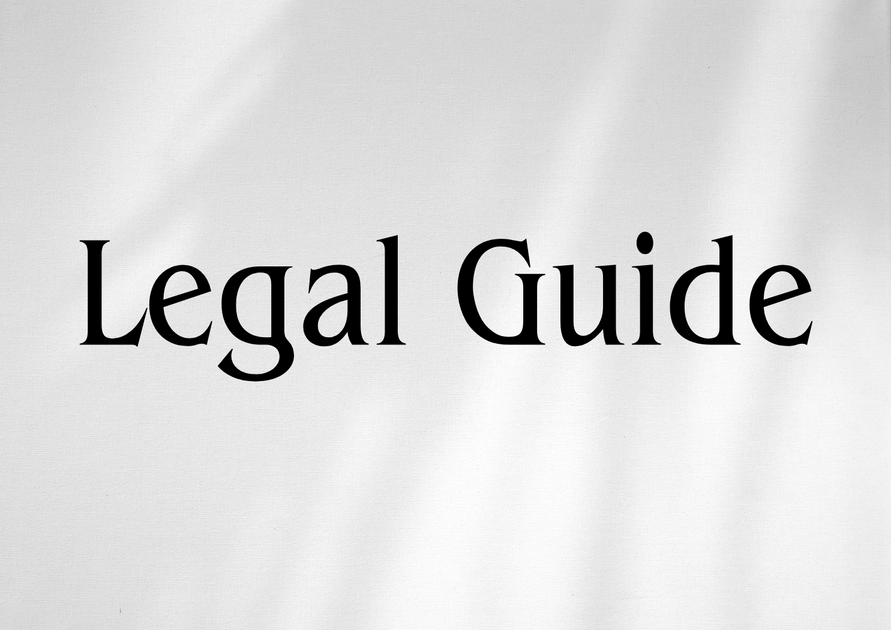Introduction: Air Accident Investigations in the Gulf — A Cross-Border Legal Imperative
The progressive expansion of aviation across the GCC, particularly the rapid development of Qatar as an aviation hub, has brought air accident investigation and compliance procedures to the foreground for UAE businesses, executives, and legal practitioners. With the 2025 UAE law updates and ongoing harmonization of safety standards across the region, understanding Qatari statutes on air accident investigation is vital not only for airlines but also for corporations, insurers, HR managers, and legal advisors involved in regional or international air operations.
This consultancy-grade guide explores the procedures and ramifications of air accident investigations under Qatari law, highlighting where they intersect with UAE frameworks. We dissect recent legislative developments, demystify compliance risks, and provide actionable insights for executive decision-makers navigating the complex regulatory environment governing aviation incidents in the Gulf.
Table of Contents
- Overview of Air Accident Investigation Laws in Qatar
- Qatari Regulatory Framework: Key Statutes and Provisions
- Comparative Analysis: Qatar and UAE Air Accident Investigation Laws
- Step-by-Step: Air Accident Investigation Procedures in Qatar
- Practical Implications for UAE Businesses and Legal Practitioners
- Risks of Non-Compliance and Mitigation Strategies
- Case Studies and Scenario Analysis
- Air Accident Compliance Checklist
- Conclusion and Strategic Recommendations
Overview of Air Accident Investigation Laws in Qatar
The Legislative Foundation
Qatar’s commitments to international aviation safety standards are anchored in Law No. 15 of 2002 (the Civil Aviation Law) and regulated by subsequent Executive Regulations issued by the Qatar Civil Aviation Authority (QCAA). These statutes are closely aligned with the Chicago Convention and ICAO Annex 13, establishing the obligations of Qatari authorities and covered entities in the event of an air accident or serious incident. The Civil Aviation Law establishes the jurisdiction, responsibility, and investigative powers of QCAA’s Air Accident Investigation Department (AAID).
Why It Matters in a UAE Context
Due to the volume of cross-border air operations, the presence of UAE-registered aircraft or crew in Qatari airspace, and the legal co-dependence created by multilateral air service agreements, it is essential for UAE legal advisors and aviation-linked businesses to grasp the Qatari legal environment. A failure to appreciate local investigative protocols, reporting duties, and data-sharing requirements can expose stakeholders to regulatory penalties, reputational risks, and legal liabilities extending to the UAE.
Qatari Regulatory Framework: Key Statutes and Provisions
1. Law No. 15 of 2002 (Qatar Civil Aviation Law)
This law forms the legal backbone of all civil aviation activities in Qatar, including incident and accident investigations. Key highlights include:
- Article 44: Mandates mandatory reporting of any accident, serious incident, or near-miss involving civil aircraft in Qatar.
- Article 46: Authorizes the QCAA to establish specialized units (the AAID) tasked with conducting independent investigations.
- Article 49: Grants the AAID full powers to access sites, records, personnel, and technical data, and to compel testimony.
2. Executive Regulations to Law No. 15 of 2002
The Executive Regulations (as amended most recently in 2022) provide detailed frameworks for action, including:
- Immediate notification procedures (within one hour of event awareness)
- Access control and site preservation measures
- Data protection and confidentiality protocols
- Obligation for cooperation by all operators, including foreign-registered carriers and service providers
3. International Commitments and QCAA Guidance
Qatari law assimilates ICAO Annex 13 procedures. Qatar’s Status with ICAO (as of 2024) merits attention because failure to comply may attract notice from international bodies and complicate liability claims.
Comparative Analysis: Qatar and UAE Air Accident Investigation Laws
While both the UAE and Qatar draw heavily on international conventions, nuanced differences remain in some elements, including timelines, data handling, and enforcement authority.
| Provision | UAE Law (Federal Law No. 20 of 1991 & GCAA CAR PART VI, 2025 update) | Qatari Law (Law No. 15, 2002 & Regulations) |
|---|---|---|
| Reporting Timeline | Immediate, and in any case not exceeding 2 hours (updated in 2025) | Immediate, and not exceeding 1 hour |
| Investigative Body | Air Accident Investigation Sector (AAIS), GCAA | Air Accident Investigation Department (AAID), QCAA |
| Mandatory Data Release | With safeguards; certain data remain confidential | Strict access controls; all confidential info protected except as needed for safety |
| Powers of Investigation | Subpoena and site access powers; enforceable under federal decree | Similar, but with specific recourse to Qatari criminal sanctions |
| Penalties for Non-Compliance | Administrative penalties and fines (AED 50,000+); criminal for obstruction | Fines and criminal liability (QAR 200,000+); possibility of imprisonment for evidence tampering |
Visual suggestion: Penalty comparison chart to help HR and compliance teams quickly understand differing penalty landscapes.
Step-by-Step: Air Accident Investigation Procedures in Qatar
1. Event Notification and Initial Response
- Immediate Reporting: Any operator, crew, or ground staff must immediately notify the QCAA upon an occurrence (accident, serious incident, or near-miss). Non-compliance triggers both administrative and criminal penalties.
- Site Security and Containment: The responsible entity must secure the site, prevent disturbance, and await AAID arrival. Evidence contamination or unauthorized site access can result in severe disciplinary and legal consequences.
2. Formal Investigation Launch
Within hours, the AAID begins on-the-ground investigation, collecting flight data recorders, evidence, and witness statements. The law prioritizes rapid preliminary assessments to fulfill ICAO obligations for initial accident bulletins.
3. Coordination with International and UAE Authorities
For incidents involving UAE-registered aircraft/operators, or where UAE nationals are affected, Qatari authorities must notify their UAE counterparts and allow participation in investigation teams, as per ICAO protocols and Gulf MoUs.
4. Data Gathering and Interview Protocols
- Compulsory production of documents, flight records, and maintenance logs
- Obligation for full cooperation by all individuals or corporate entities, including potential prosecution for obstruction
- All interviews are conducted with legal representation permitted, but recording is mandatory
5. Analytical Phase and Draft Reporting
- Collection and forensic analysis of physical evidence and digital data
- Release of a preliminary report (usually within 30 days)
- Solicitation of comments from relevant stakeholders, including foreign operators and regulators
6. Final Report and Legal Consequences
- Comprehensive final report issued, including factual analysis, conclusions, and recommendations
- Possible enforcement actions: safety directives, fines against operator/individuals, or criminal referrals (especially if negligence or malfeasance contributed)
Visual suggestion: Process flow diagram for clarity.
Practical Implications for UAE Businesses and Legal Practitioners
Qatari law’s strict disclosure and cooperation requirements extend to any UAE-based or registered operator involved in an incident. For UAE lawyers, HR managers, safety officers, and in-house counsel, this means:
- Immediate Readiness: Ensure protocols authorizing immediate notification and legal representation are in place for staff in Qatar.
- Training on Site Preservation: Conduct regular compliance training, emphasizing preservation of evidence and non-interference with accident sites.
- Cross-Border Compliance: Map out reporting and data-sharing obligations per both Qatari and UAE laws. Engage with QCAA and GCAA parallelly where cases involve shared jurisdiction.
- Document Retention and Data Security: Maintain secure backup and quick-access protocols for flight and personnel records, as delays are treated as evidence concealment under Qatari law.
Notably, businesses must ensure insurance policies and legal contracts adequately address liability and representation in the event of cross-border accidents, including indemnity for cost of legal advice under multiple regulatory regimes.
Risks of Non-Compliance and Mitigation Strategies
Administrative and Criminal Penalties
The fallout for non-compliance under Qatari Civil Aviation Law can be serious:
- Fines reaching QAR 200,000+, plus potential blacklisting from Qatar’s air registry
- Imprisonment for deliberate evidence tampering or obstruction
- Restrictions or bans on commercial flight permissions
- Heightened scrutiny for future operations or licensing
HR directors and legal heads should note that Qatari authorities have a track record of strict enforcement. In one high-profile 2019 incident, a major Gulf airline incurred sizeable penalties following delayed notification and incomplete data submission.
| Risk | Potential Outcome | Recommended Mitigation |
|---|---|---|
| Delayed reporting | Regulatory fine; loss of license | Automated notification protocols; staff training |
| Poor evidence preservation | Criminal liability; reputational risk | Appoint in-country incident response staff |
| Data handling lapses | Administrative sanctions; data breach exposure | Robust data retention and privacy safeguards |
Strategic Compliance Best Practices
- Conduct regular mock drills and legal audits with Qatari legal specialists
- Execute cross-border training sessions involving UAE and Qatari legal counsel
- Review and update contracts to include incident investigation cooperation clauses
Case Studies and Scenario Analysis
1. Incident Involving a UAE-Based Charter Operator in Qatar’s Airspace
Scenario: A UAE-chartered private jet sustains a gear malfunction on approach to Doha. Minor injuries are reported, triggering Qatari investigation protocols.
Legal Outcome: The operator’s failure to immediately notify QCAA and their delayed provision of maintenance logs (kept in their UAE headquarters) led to administrative penalties. The lesson: UAE operators must pre-position compliance resources in-country and coordinate swiftly with both QCAA and GCAA when incidents arise in Qatar.
2. Multinational Business Delegation in a Qatar-Based Air Accident
Scenario: An HR manager from a Dubai-based multinational is injured in a Qatari domestic flight incident involving a third-party carrier.
Legal Outcome: The injured party’s employer was compelled to cooperate with QCAA in providing records of crew competence and travel risk management plans—even though their legal nexus was primarily with the UAE. Delayed compliance complicated insurance claim processing and regulatory review.
3. Hypothetical — Data Security Breach During Investigation
Scenario: During evidence handover, flight data is inadvertently disclosed to third parties.
Legal Outcome: Both the responsible operator and their UAE-based data processor faced scrutiny under Qatari data protection laws for violation of information confidentiality, leading to fines and additional reporting obligations in the UAE under the 2025 data privacy rule updates.
Air Accident Compliance Checklist
| Checklist Item | Action Required | Responsible Party |
|---|---|---|
| Incident reporting procedures | Document & communicate internal/external reporting steps | Compliance Officer/HR Manager |
| Legal representation in Qatar | Pre-appoint legal counsel for response team | Legal Department |
| Site preservation protocol | Train staff & create reference guides | Aviation Operations |
| Cross-border notification mapping | Update protocols for rapid multi-jurisdictional alerts | Compliance/Legal |
| Document & data control | Deploy secure backup for flight records | IT/Data Officer |
Visual suggestion: Compliance checklist chart, providing a rapid reference for in-house teams.
Conclusion and Strategic Recommendations
Air accident investigation procedures under Qatari law are characterized by robust, time-sensitive, and strictly enforced mandates. For UAE-based organizations and cross-border carriers, the key to compliance—and reputational protection—lies in proactive engagement, integrated compliance training programmes, legal pre-positioning, and harmonization of protocols with both Qatari and UAE regulatory requirements. The 2025 UAE law updates further underscore the regional push toward standardized practices in the Gulf, making it essential for businesses to maintain up-to-date, actionable air accident response frameworks.
Going forward, GCC businesses must recognize the strategic advantages of compliance: not only avoiding regulatory penalties, but also strengthening risk management, insurance posture, and corporate reputation. We recommend retaining specialist legal counsel with expertise in both UAE and Qatari aviation law, regularly reviewing corporate protocols, and engaging with authorities to stay ahead of evolving regulations.
For tailored advice on handling air accident matters or conducting compliance reviews, our legal consultancy stands ready to provide in-depth, cross-jurisdictional guidance to protect your organization’s interests.




